Make sure to join my list for Weekly Tips and Recipes to Your Inbox
15 Beautiful Wabi Sabi Kitchen Design Ideas
When I first began dreaming of my wabi sabi kitchen, I faced a question I hadn’t expected: how do you capture the beauty of imperfection in a world obsessed with polished finishes and symmetry?
I had just stumbled across Sparano + Mooney’s project in Emigration Canyon, and it opened my eyes to the possibility of designing a space that felt rooted in nature, and incomplete.
As someone who gravitates toward Japandi style for its clean lines the wabi sabi philosophy felt like an invitation to embrace the real and the unfinished, not just as a compromise, but as a deliberate aesthetic.

We recently completed a wabi sabi kitchen project in our Chicago loft, and the process completely shifted how I view design. Instead of gutting everything for something new, we kept the original appliances and worked with what we had, designing modern cabinets with fluted glass, reusing the stone island countertop, and layering warm oak veneers for texture.
While some felt the darker elements leaned industrial, I welcomed that honest feedback. We added soft touches with some plants and natural linens, to strike the delicate balance between minimal and organic. We weren’t aiming for showroom perfection. We were building soul.
I’ve learned that you don’t need exposed beams or designer concrete to create a wabi sabi kitchen. If your home doesn’t come with architectural features, start by subtracting before adding.
Remove what distracts, then layer in thoughtfully sourced pieces, wood shelves from Etsy, linen throws from Target, or framed public domain art. Even in a modest home, serenity is possible.
The imperfections aren’t flaws; they’re the point. In the quiet beauty of the unfinished, you’ll find something totally complete.
15. Use Natural Materials for an Organic Look
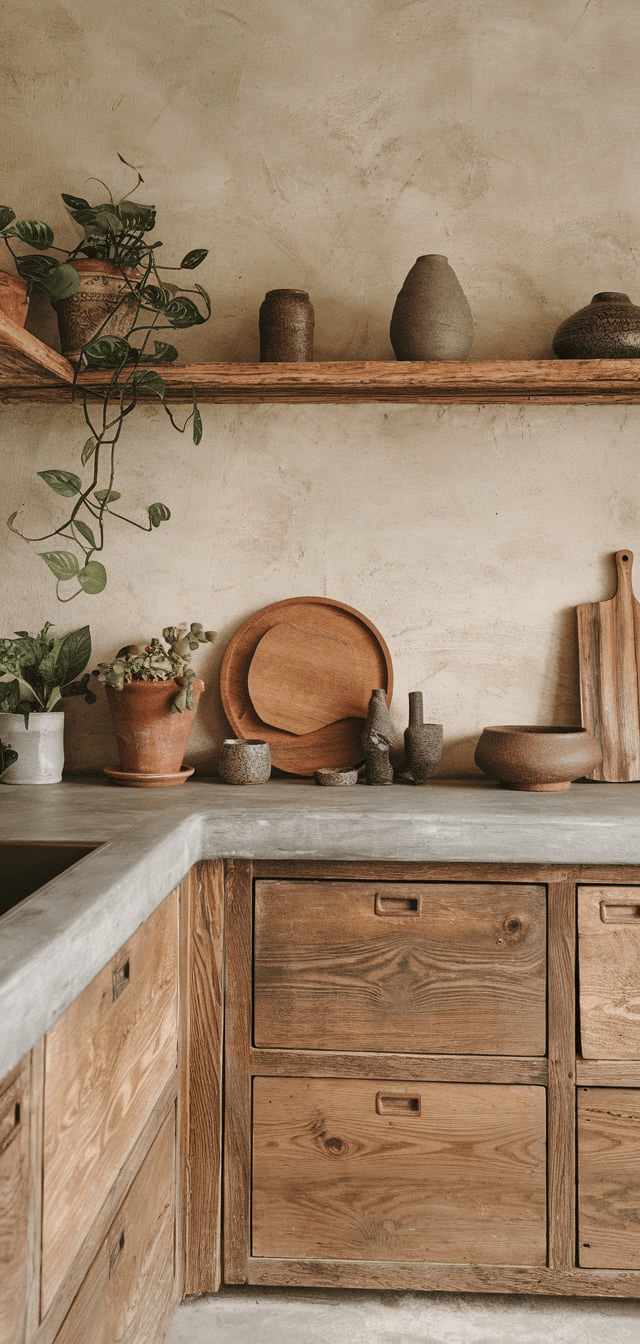
Opt for raw wood, unpolished stone, and handmade ceramics. These materials develop a beautiful patina over time, reflecting age and use with dignity.
Tips:
- Choose reclaimed wood for open shelving or countertops.
- Integrate unglazed terracotta or handmade tiles for backsplashes.
- Use linen or cotton for curtains and soft finishes.
14. Embrace Imperfect Surfaces
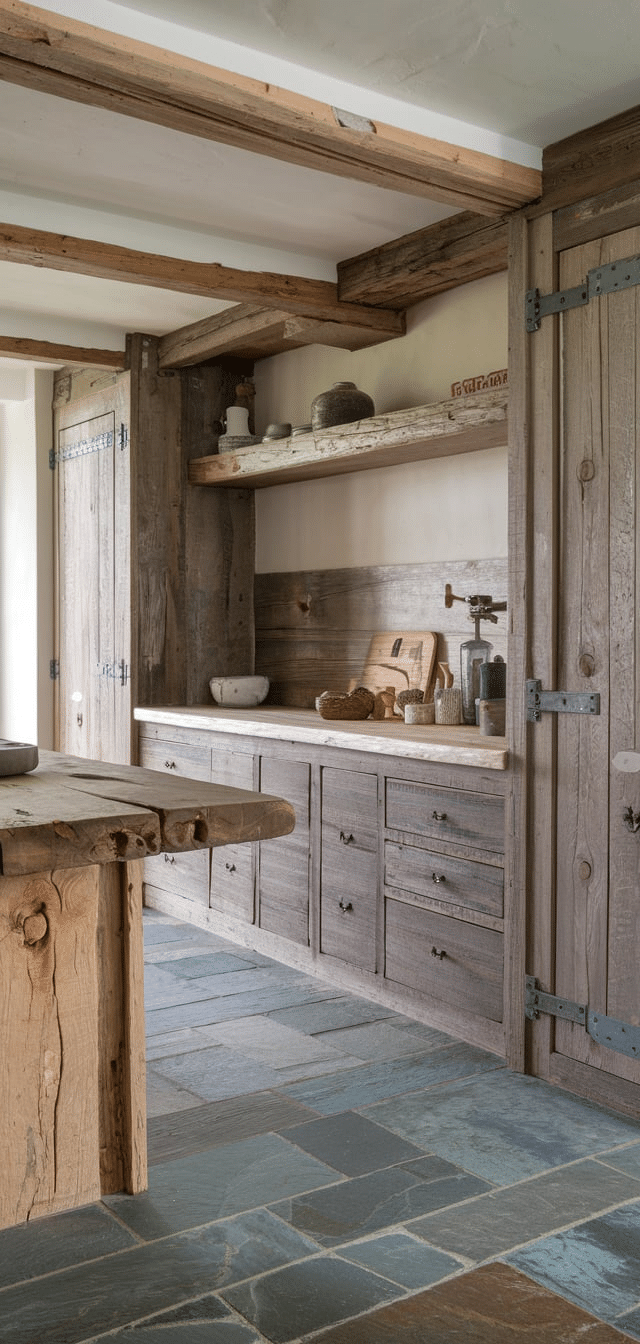
Surface finishes should reflect age and authenticity. Prioritize weathered, uneven, and hand-finished surfaces over sleek perfection.
Tips:
- Select brushed or honed granite instead of polished.
- Apply lime wash or clay-based paints to create a subtle texture.
- Avoid glossy cabinets; opt for matte or distressed wood instead.
13. Open Shelving with Purposeful Placement
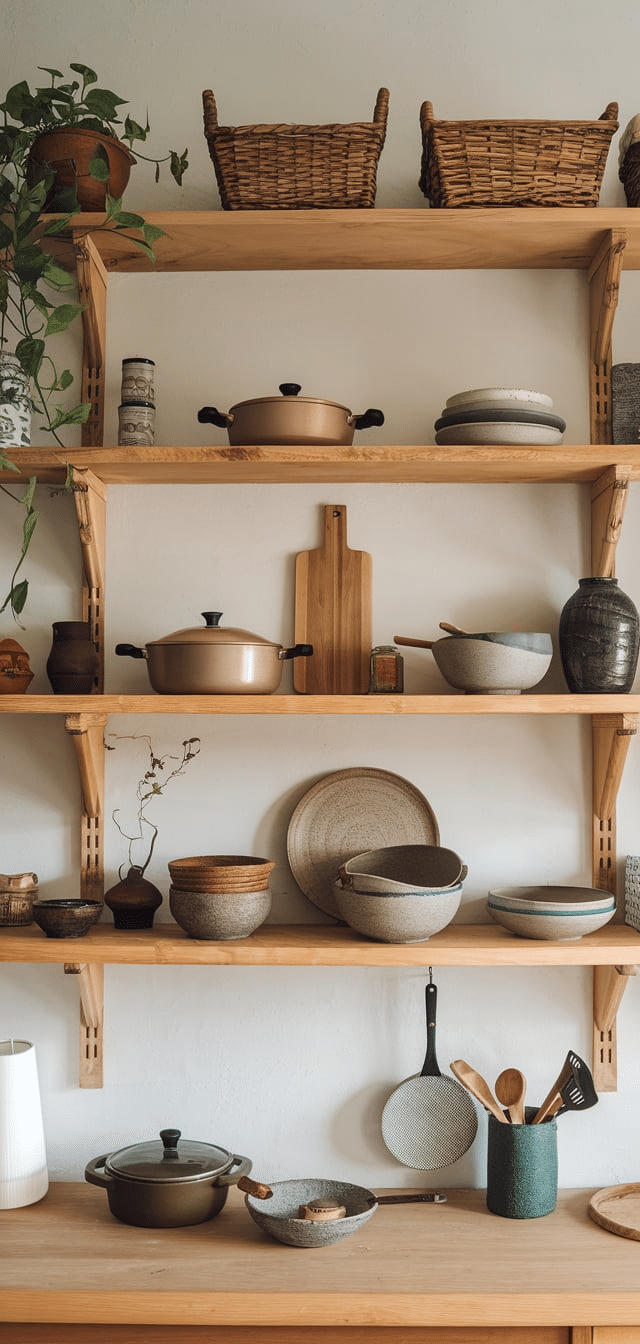
Ditch closed cabinetry for open shelving that showcases beautiful everyday items. Let utility blend with visual harmony.
Tips:
- Use raw or lightly stained wood shelves.
- Arrange handmade bowls, cups, and teapots with care.
- Limit visual clutter, group by material or function.
12. Earthy, Muted Color Palettes
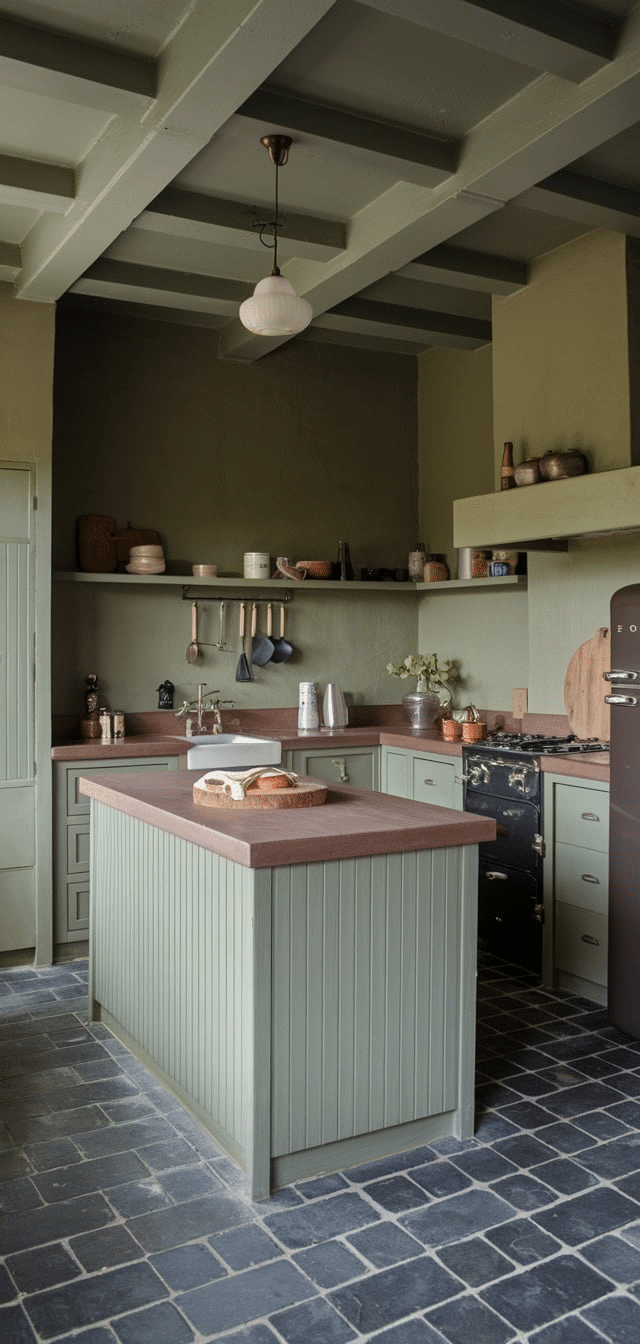
Wabi-sabi interiors thrive in tones inspired by nature: moss green, clay brown, charcoal gray, and off-white.
Tips:
- Avoid bold colors; choose tones with low saturation.
- Use layering of neutrals to create depth.
- Complement with warm wood tones and soft lighting.
11. Minimalist Layouts for Calm and Function
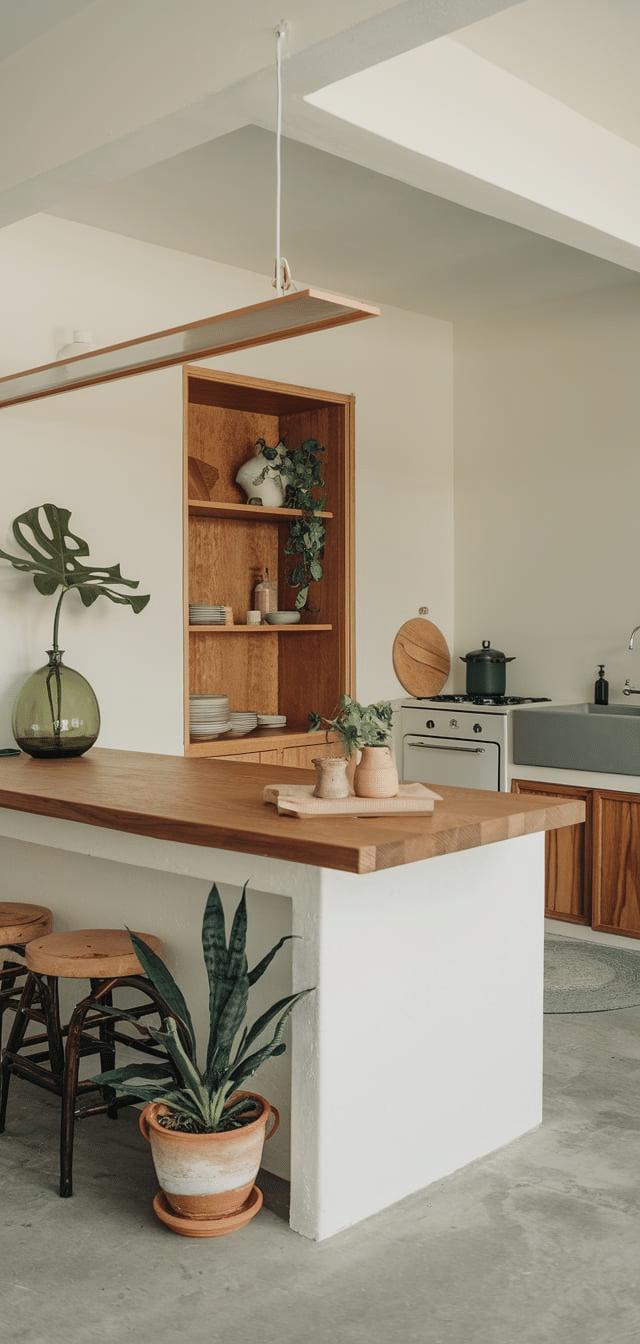
Keep the kitchen layout minimal and spacious. Wabi-sabi is about doing more with less.
Tips:
- Remove unnecessary furniture and appliances.
- Use multipurpose counters for food prep and casual dining.
- Leave space between functional zones to maintain visual calm.
10. Showcase Handmade and Vintage Pieces
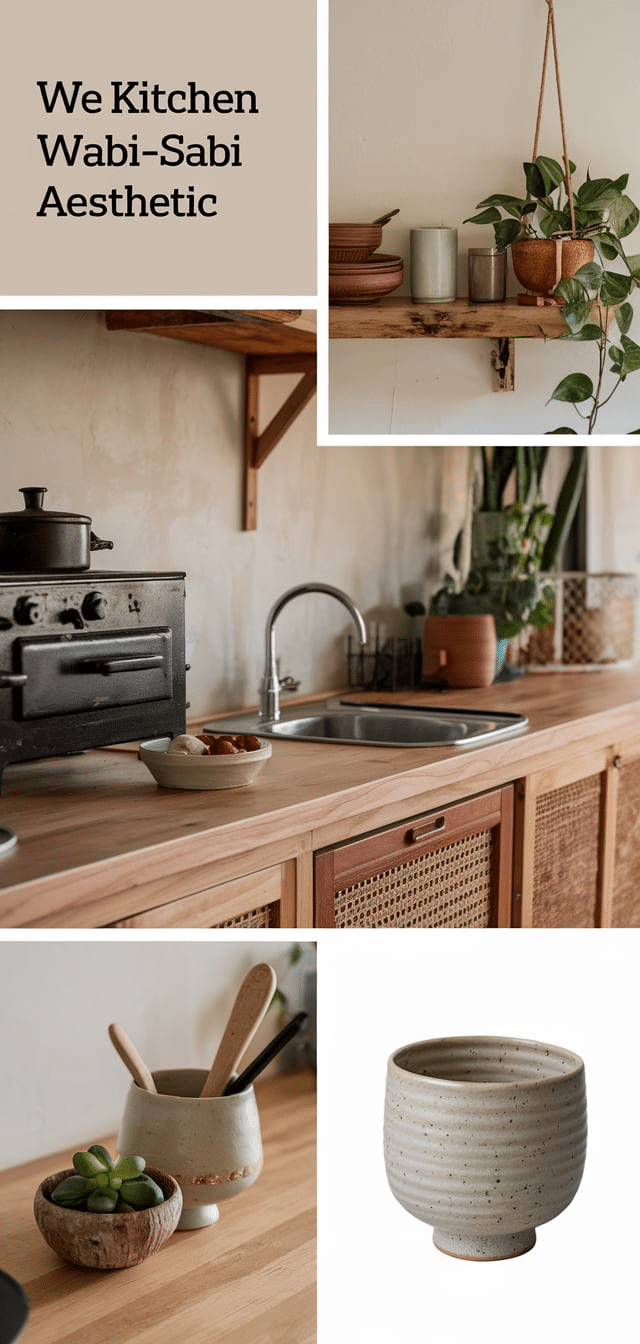
Incorporate objects with history and character. Handmade items add soul, while vintage pieces anchor the space.
Tips:
- Use antique pottery as utensil holders.
- Hang an old wooden cutting board as wall décor.
- Blend modern appliances with retro hardware or knobs.
9. Soft, Ambient Lighting Over Harsh Fixtures
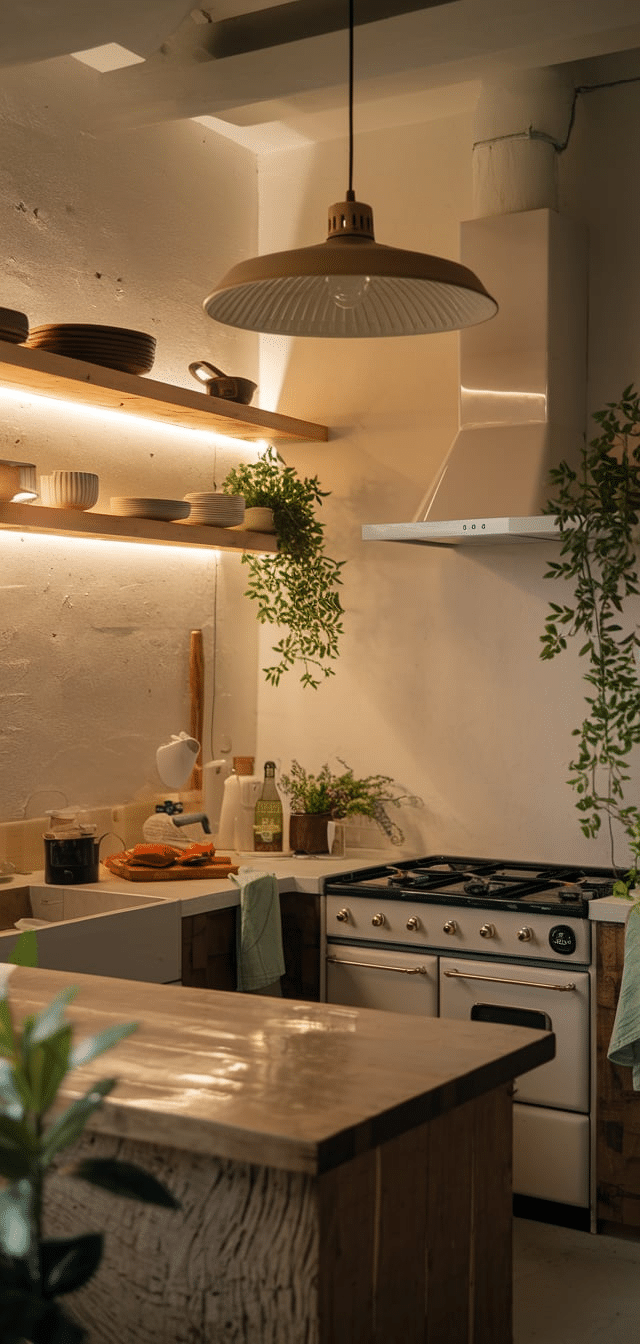
Avoid bright or cold lights. Wabi-sabi spaces glow gently, mimicking natural daylight and candlelight.
Tips:
- Use pendant lights with fabric or rice paper shades.
- Install under-shelf lighting to illuminate softly.
- Consider dimmable fixtures to adjust mood by time of day.
8. Celebrate Patina and Wear
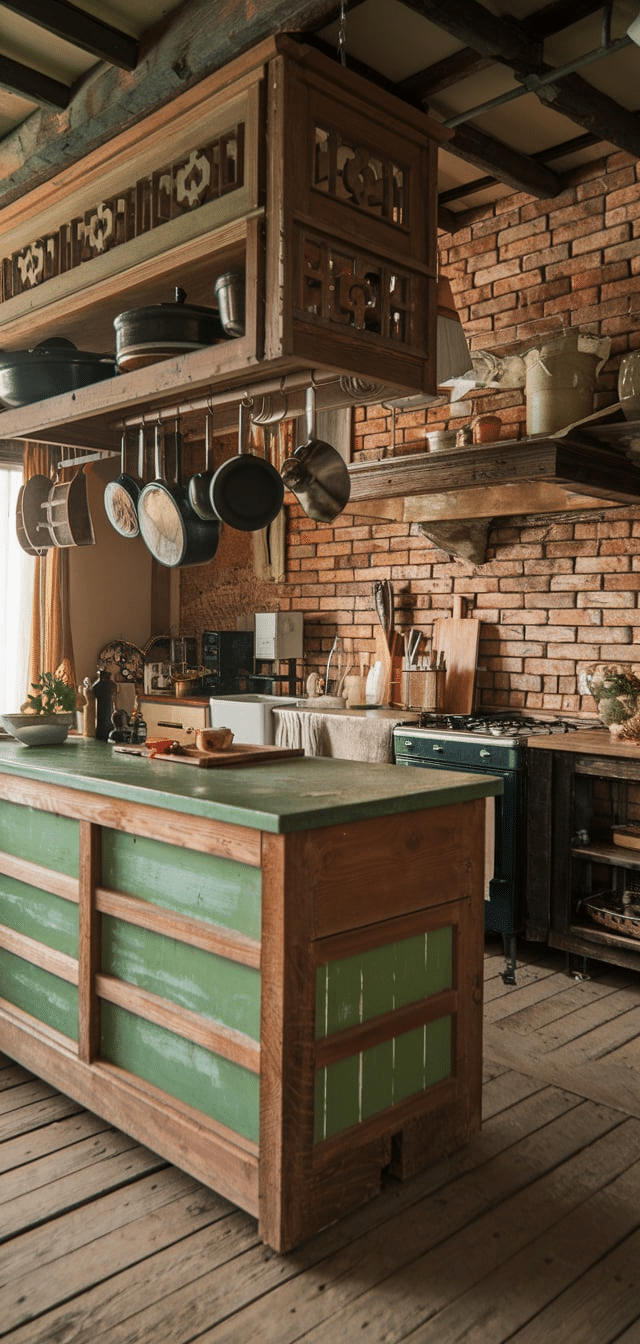
Let materials evolve. Time adds texture, warmth, and history to every surface.
Tips:
- Do not replace aging wood, sand lightly and reseal.
- Accept scratches on stone countertops as character marks.
- Choose copper or brass that naturally oxidizes over time.
7. Sustainable, Mindful Design Choices
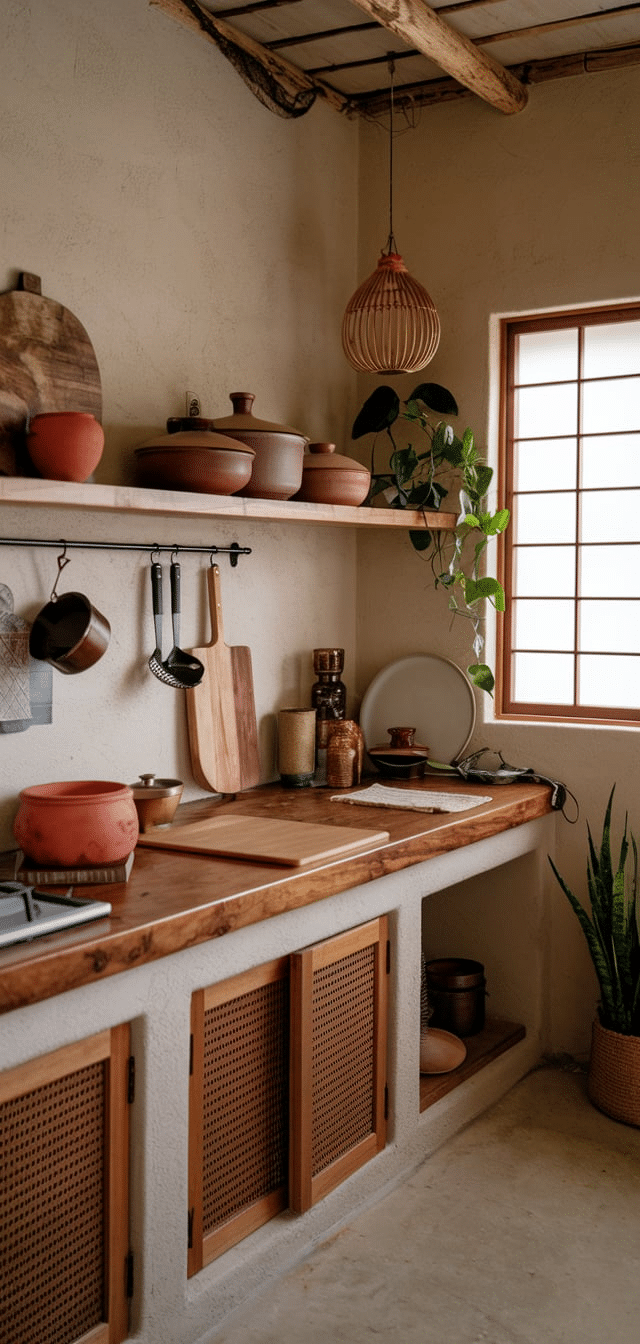
Wabi-sabi honors nature through sustainable materials and conscious consumption.
Tips:
- Choose FSC-certified or reclaimed wood.
- Opt for long-lasting, repairable appliances.
- Avoid fast design trends, aim for timeless quality.
6. Integrate Indoor-Outdoor Harmony
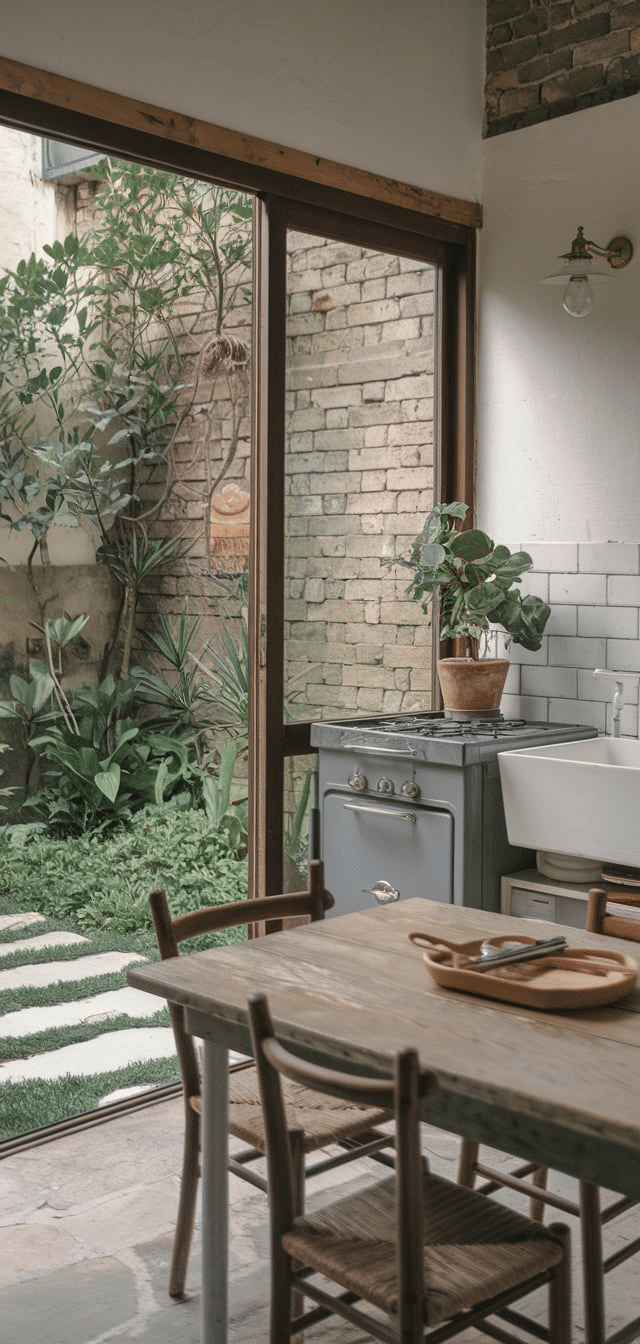
Create a visual and functional flow between the wabi sabi kitchen and nature.
Tips:
- Install large windows with views of greenery or courtyards.
- Place potted herbs or bonsai on windowsills.
- Use sliding doors to connect to outdoor terraces.
5. Textural Layers for Visual Warmth
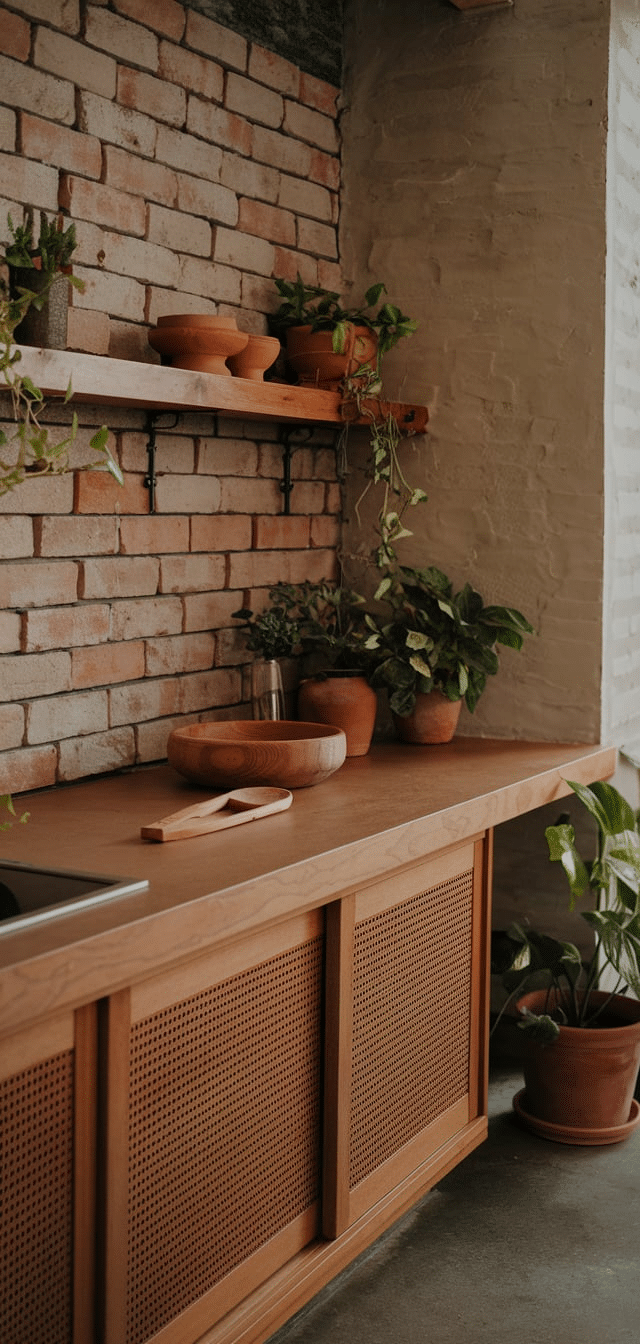
Mix textures to add visual interest without clutter in your wabi sabi kitchen.
Tips:
- Combine stone counters with linen runners and bamboo baskets.
- Use roughly woven mats or trays to contrast smooth ceramics.
- Display a mix of wood grains and finishes.
4. Declutter with Intentional Storage
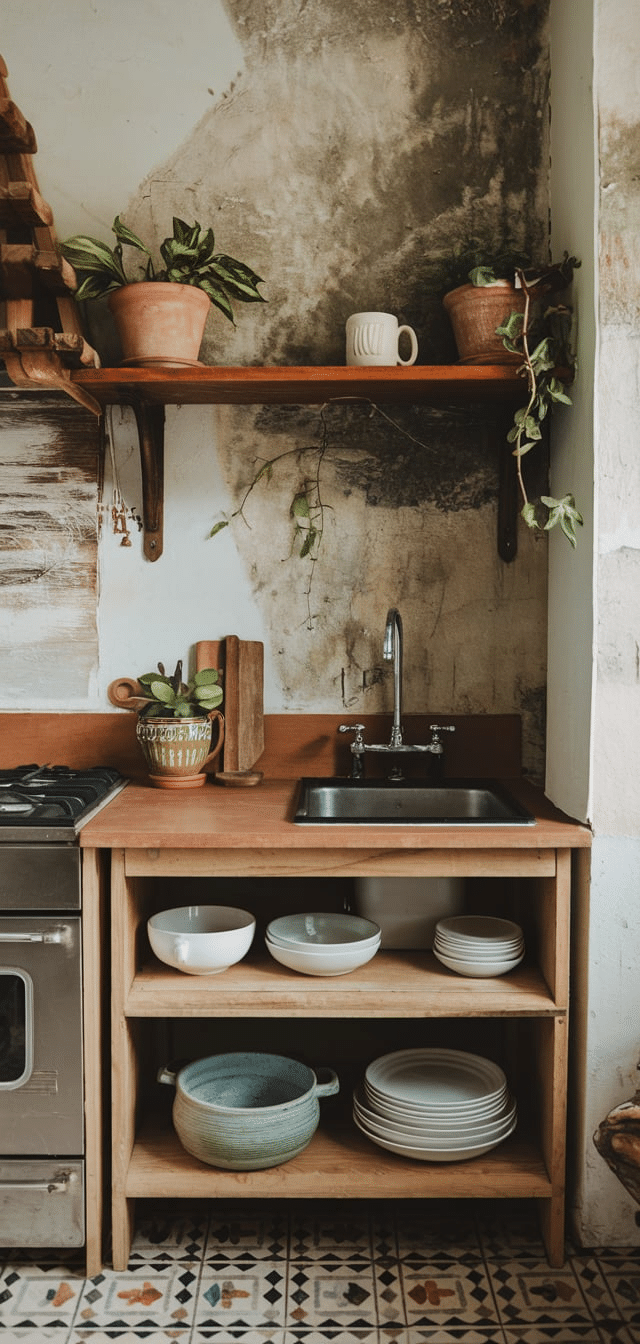
Let only meaningful items remain in sight. Everything else should have a dedicated wabi sabi kitchen.
Tips:
- Use woven baskets and wooden boxes inside drawers.
- Store bulk goods in labeled glass jars.
- Rotate seasonal items in and out of view.
3. Design Around Daily Rituals
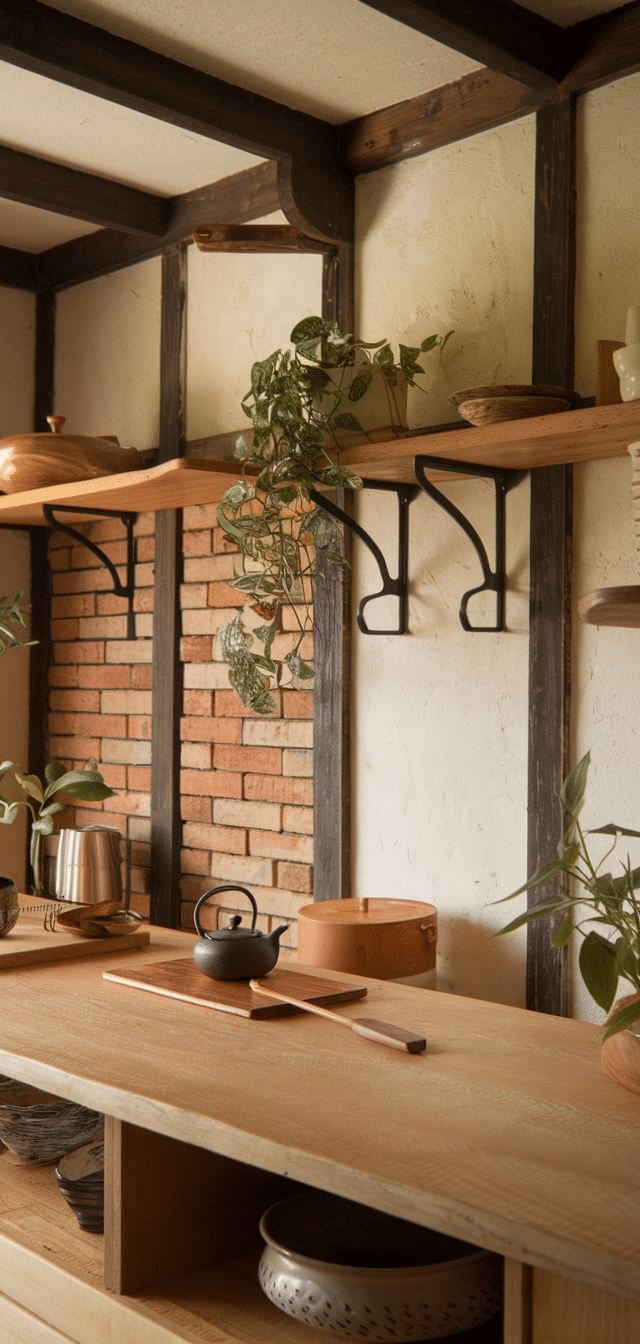
Let everyday habits shape your wabi sabi kitchen. This is the essence of functional beauty.
Tips:
- Create a tea or coffee corner with handmade cups and tools.
- Keep cooking essentials within arm’s reach.
- Use a central island to serve as both prep and conversation space.
2. Incorporate Asymmetry and Organic Shapes
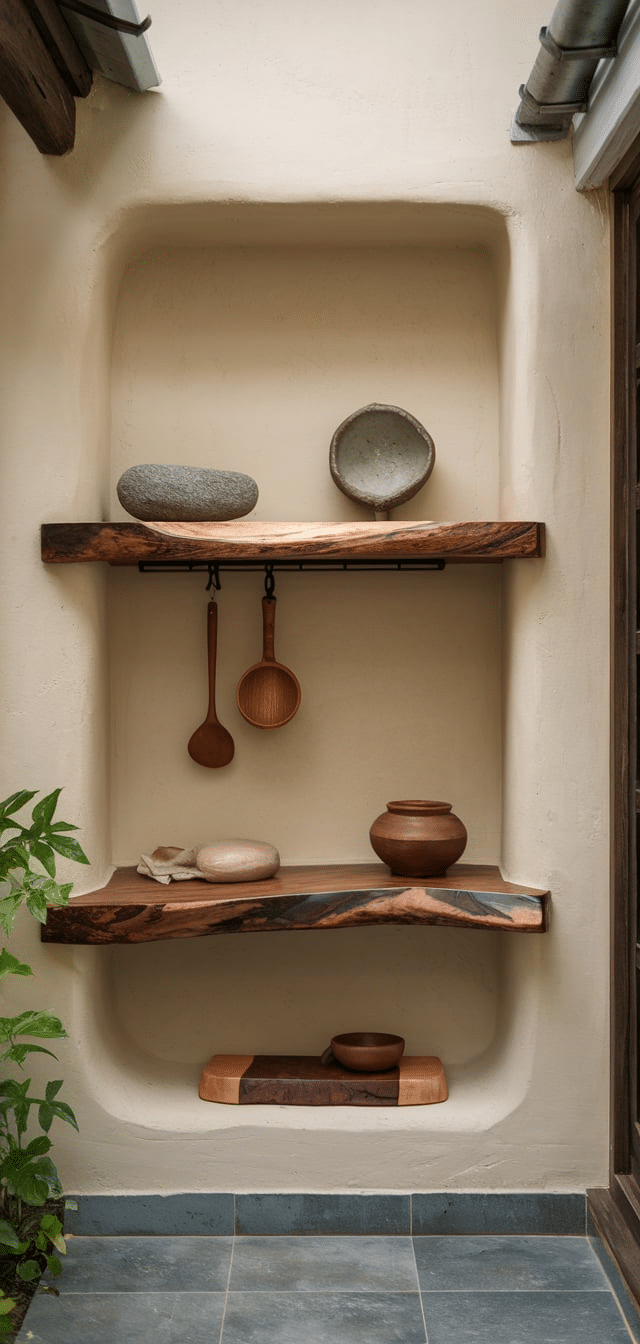
Reject rigid symmetry. Organic forms evoke calm and authenticity.
Tips:
- Choose irregularly shaped serving platters or bowls.
- Display asymmetrical arrangements on open shelves.
- Avoid perfectly matched dining chairs, mix subtly different styles.
1. Personal Touches with a Story
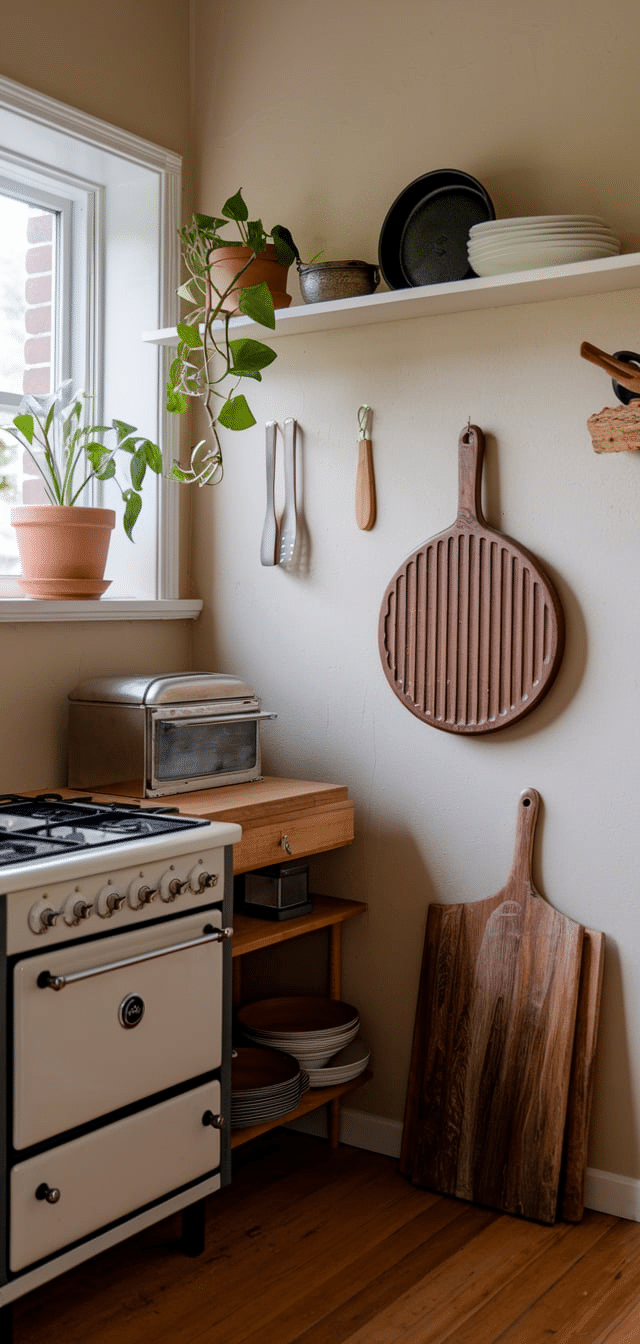
Infuse the wabi sabi kitchen with personality through meaningful items.
Tips:
- Frame a recipe handwritten by a family member.
- Display heirloom wabi sabi kitchenware on a floating shelf.
- Include travel finds, like a stone mortar from an artisan market.
Conclusion
A wabi sabi kitchen is more than a design trend, it’s a lifestyle of thoughtful imperfection, grounded in nature and shaped by time. By embracing simplicity, authenticity, and organic beauty, we create a space that nurtures presence, function, and quiet joy in daily rituals. Implementing these 15 ideas will not only transform the aesthetics of your wabi sabi kitchen but also elevate your everyday experiences within it.





